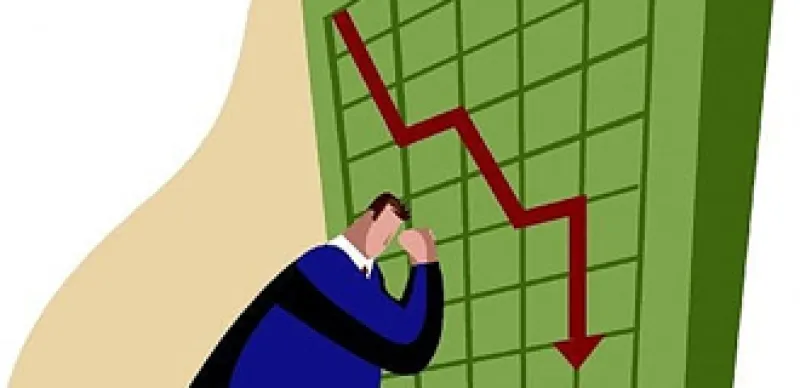So, the deterioration in the U.S. fiscal position has become so severe that even the ratings agencies have taken notice. It remains doubtful, however, that Washington will take prompt action – or that Wall Street and foreign creditors would like the result if and when the U.S. does act.
Monday’s decision by Standard & Poor’s Corp. to revise down its outlook on the U.S.’s AAA credit rating, to negative, was remarkable only for its timing. If the U.S. were not the world’s sole superpower and issuer of the main global reserve currency, S&P arguably would have acted sooner – say, nearly two years ago, when the agency put a negative outlook on the U.K. because of its budget deficit, which at just over 10 percent of GDP mirrors that of the U.S. The move also comes as the Obama administration and Congressional Republicans prepare to battle over an increase in the U.S. debt ceiling, which must be approved by July to avert default.
There was no small amount of irony in the announcement. After all, the U.S. government ramped up borrowing largely to prevent an economic collapse after the financial crisis, an event that S&P and other ratings agencies helped propagate. “Back in 2006-07, when S&P was busily AAA-rating sub-prime garbage, the subsequent surge of U.S. debt issuance was made inevitable by the stupidity, greed and corruption of the rating agencies – and the Wall Street types and international investors who believed, or pretended to believe, them,” says Charles Dumas, chairman of Lombard Street Research in London.
Plenty of others have also been warning about the unsustainability of the U.S. deficit and debt trends. The International Monetary Fund last week called on Washington to “accelerate the adoption of credible measures to reduce debt ratios.” Carlo Cottarelli, director of the fund’s Fiscal Affairs Department, noted that while most major countries have adopted austerity programs to reduce their deficits, the budget deal agreed by the administration and Congress in December actually increases U.S. red ink.
Bond market guru Bill Gross last month warned of a soft “default” – via inflation or a weaker dollar – unless the U.S. gets entitlement spending under control. “It was much more important to me as an investor that PIMCO’s Bill Gross was out of Treasuries a month ago (and indeed, is short) than what S&P says,” Barry Ritholtz, head of Fusion IQ, wrote on his financial blog, The Big Picture.
Still, the S&P move is significant. It means that the government of the world’s largest economy and the issuer of the supposedly risk-free securities — U.S. Treasuries — that underpin the global credit markets is now the only one of 19 AAA-rate sovereigns to have a negative outlook. That implies a one-in-three chance that the U.S. will actually lose its vaunted rating within two years, which S&P says will happen unless Washington begins comprehensive deficit reduction by 2013.
Next year’s presidential election makes it unlikely that Washington will meet that timetable. Both sides of the political aisle have staked out starkly contrasting visions of the size and role of government. The Republican plan put forward by Representative Paul Ryan would slash discretionary federal spending and the Medicare health program for senior citizens and cut taxes on the wealthy, while President Obama seeks to preserve the government’s role by combining more modest spending cuts with tax increases on the rich. It’s difficult to see how the two sides can bridge those differences and agree on anything more than token spending cuts ahead of the November 2012 election, Douglas Elmendorf, director of the nonpartisan Congressional Budget Office, told an IMF conference on fiscal policy last week.
For the moment, financial markets aren’t pressing for a quick budget deal. The yield on the Treasury’s benchmark 10-year bond actually fell a few basis points in the 24 hours after the S&P move, and remain historically low at 3.36 percent. One risk is that markets will lull politicians into complacency until it’s too late to avoid a crisis, effectively giving Washington enough rope to hang itself. Canada began to get its budget under control in the 1990s only after markets began forcing up interest rates, Benoît Robidoux, Canada’s assistant deputy Finance minister for economic and fiscal policy, told the IMF conference. “The markets tend to be good to you up to the end,” he said, “but the end will come.”
Another risk is that markets see U.S. austerity coming all too clearly. Consider that European countries have been tightening their budgets for the past year, but the region’s debt crisis appears to be worsening, not improving. Emerging market nations led by China have been tightening monetary and credit policies in a bid to contain inflation recently. In this climate, serious fiscal tightening by Washington could put a damper on global growth.
Lombard Street’s Dumas says real fiscal austerity would push the U.S. current account from deficit to surplus, hitting export-oriented countries like China the hardest. “The Americans are going to get rid of their deficits, because they have to. We did not need S&P to tell us that. As a result, the world economy will see a painful period of adjustment lasting several years, with America the only major country likely to enjoy moderately good growth.”






